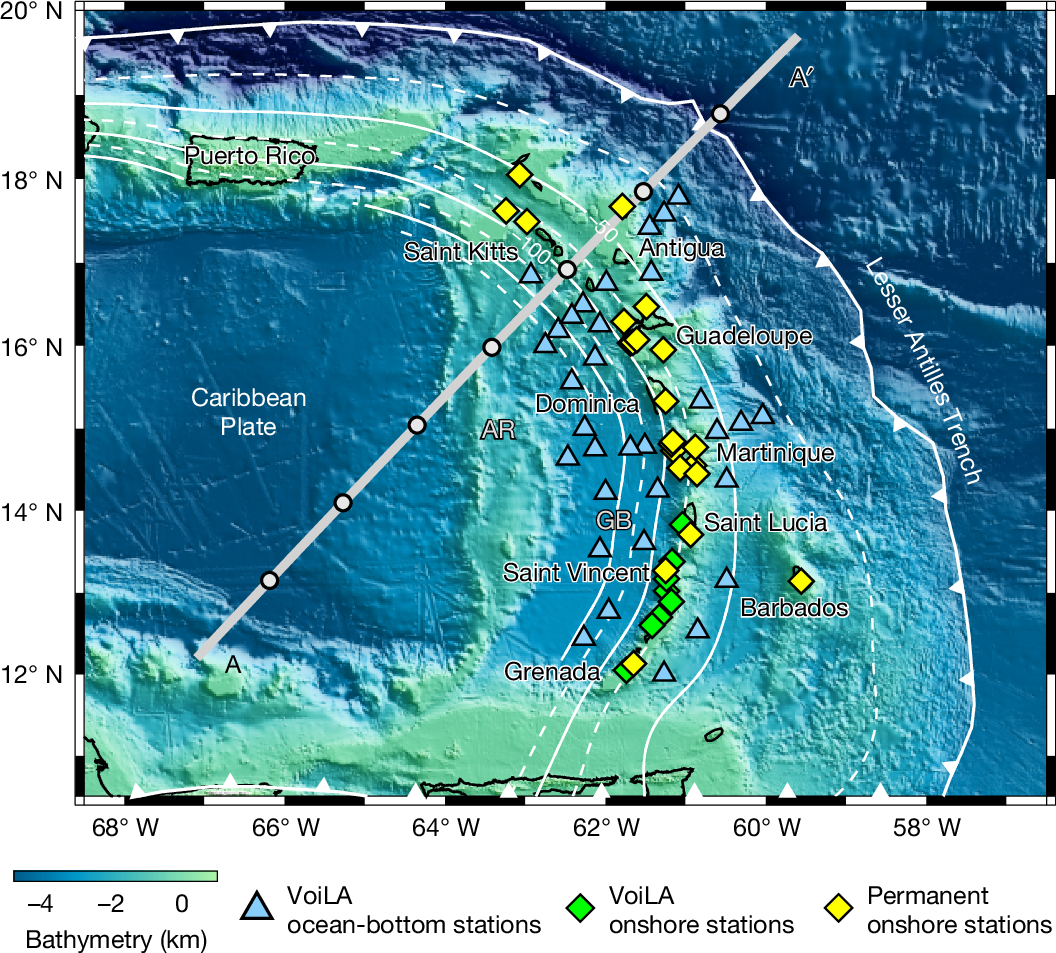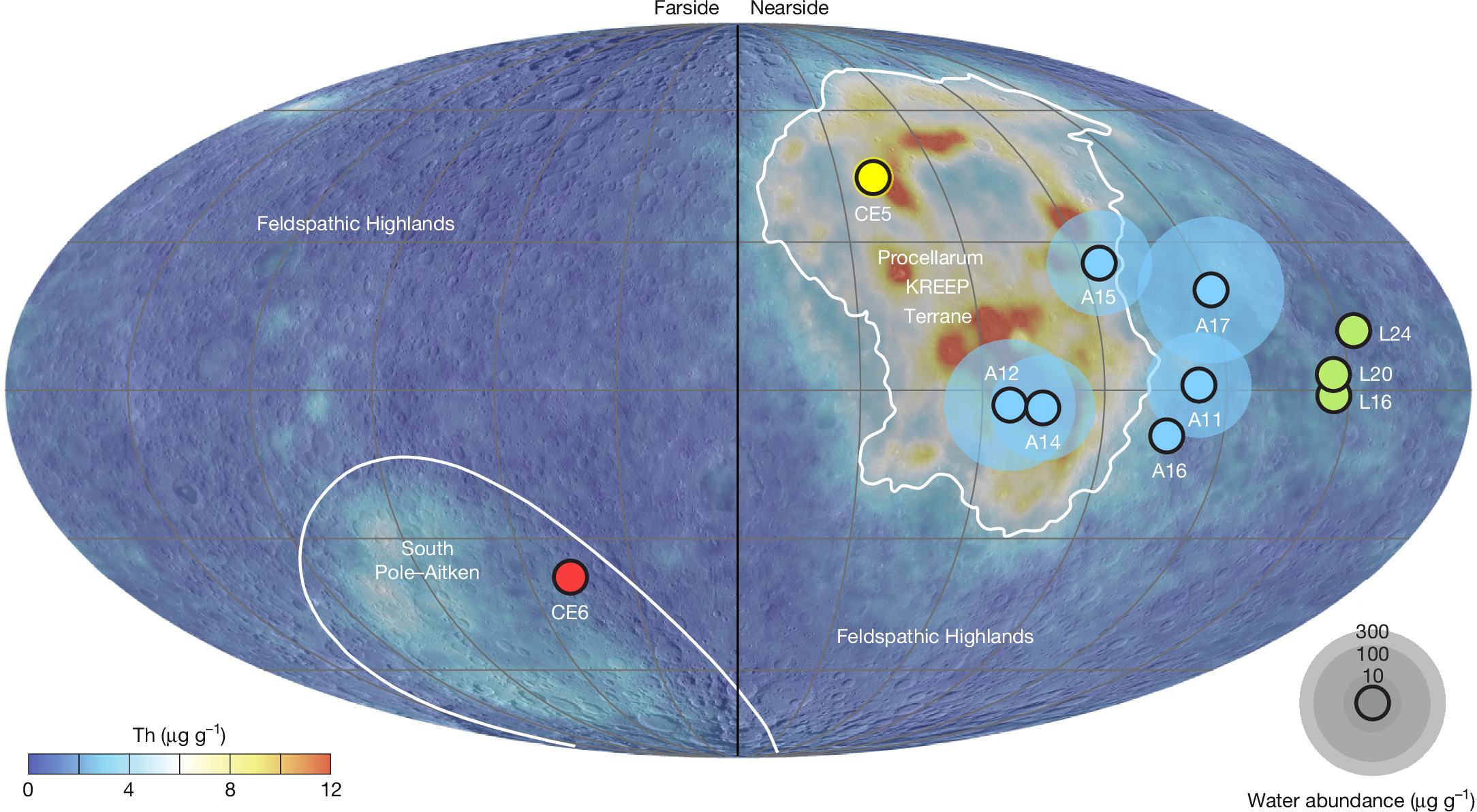2025-04-08 中国科学院(CAS)
<関連情報>
- https://english.cas.cn/newsroom/research_news/earth/202504/t20250407_909539.shtml
- https://www.nature.com/articles/s41586-025-08754-0
古代テクトニクスによる小アンティル諸島玄武岩質スラブの地震学的イメージング Seismic imaging of a basaltic Lesser Antilles slab from ancient tectonics
Xusong Yang (杨旭松),Yujiang Xie (谢裕江),Catherine A. Rychert,Nicholas Harmon,Saskia Goes,Andreas Rietbrock,Lloyd Lynch & Members of the VoiLA Working Group
Nature Published:09 April 2025
DOI:https://doi.org/10.1038/s41586-025-08754-0

Abstract
At subduction zones, lithospheric material descends through the upper mantle to the mantle transition zone (MTZ), where it may continue to sink into the lower mantle or stagnate. Several factors may be important in influencing this flow, including chemical heterogeneity. However, tight constraints on these mantle flows and the exact factors that affect them have proved challenging. We use P-to-S receiver functions to image the subducting slab and the MTZ beneath the Lesser Antilles subduction zone. We image a singular, superdeep (>700 km) 660-km discontinuity over a 200-km-wide zone within the slab, accompanied by nearby double 660 discontinuity phases (normal and superdeep). Combined geodynamic and waveform modelling shows that this observation cannot be explained by temperature effects in typical mantle compositions but requires a large basalt-rich chemical anomaly, strongest in the location of the singular, deep 660. The inferred basalt signature is near the proposed location of a subducted extinct spreading ridge, where basalt is probably present in greater proportions. Our finding suggests that past tectonic events impart chemical heterogeneity into slabs, and the heterogeneities, in turn, may affect the inherent tendency of the slab to sink.



